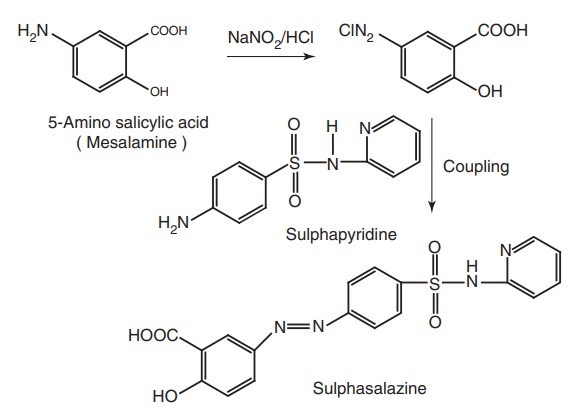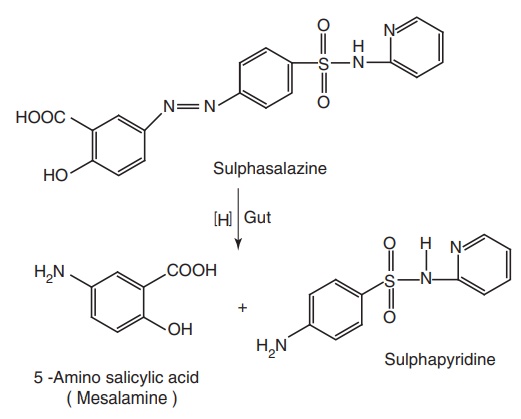Antisecretory drugs
| Home | | Medicinal Chemistry |Chapter: Medicinal Chemistry : Antidiarrhoeals
Antisecretory drugs : i. Sulphasalazine (salicylazosulphapyridine) ii. Bismuth subsalicylate iii. Atropine iv. Octreotide v. Racecadotril - Synthesis and Drug Profile
Drugs Acting on Digestive System
Antidiarrhoeals
Intestinal Antiseptics
These agents
are used to treat severe diarrhoeal forms, which are due to microbial
infection. They mainly comprise of certain members of the sulphonamides and
antibiotics that are poorly absorbable in the GIT, and thus, reach in high
concentrations to the small and large bowels. Examples are sulphasalazine,
sulphaguanidine, phthalyl sulphathiazole, succinyl sulphathiazole. Various
combinations of sulphonamides and antibiotics along with kaolin are available
either in the form of cream or suspension. Streptomycin, neomycin,
chloramphenicol, tetracyclines and nystatin are the examples of such
antibiotics used for this purpose.
Antisecretory drugs
i. Sulphasalazine (salicylazosulphapyridine)

Synthesis

Metabolism: It undergoes reductive metabolism by gut bacteria, converting
the drug into sulphapyridine and 5-amino salicylic acid, which are the active
components.

Properties and uses: Sulphasalazine is a bright yellow or
brownish-yellow fine powder, practically insoluble in water and methylene
chloride and sparingly soluble in alcohol. It dissolves in dilute solutions of
alkali hydroxides and used in the treatment of inflammatory bowel diseases such
as ulcerative colitis.
Assay: Dissolve and dilute the sample in 0.1 M sodium hydroxide and add
0.1 M acetic acid and measure the absorbance at the maxima of 359 nm using
ultraviolet spectrophotometer.
Dosage forms: Sulphasalazine tablets B.P.
ii. Bismuth subsalicylate
It acts by
decreasing prostaglandin synthesis in the intestinal mucosa, thereby reducing
Cl– secretion. It has some prophylatic value in traveller’s diarrhoea (probably
due to weak antibacterial action also), but it is rather inconvenient to carry
and take.
iii. Atropine: Atropinic drugs
can reduce bowel motility and secretion, but have poor efficacy in secretory
diarrhoeas. They may benefit nervous/drug (neostigmine, metaclopramide,
reserpine) induced diarrhoeas and provide some symptomatic relief in
dysenteries diverticulitis.
iv. Octreotide: This somatostatin analogue has a long plasma as
well as potent antisecretory/antimotil ity action on the gut. It has been used
to control diarrhoea in carcinoid and vasoactive intestinal peptide secreting
tumours and for refractory diarrhoea in AIDS patients, but needs to be given by
subcutaneous injections.
v. Racecadotril: This recently introduced prodrug is rapidly converted to
thiorphan, an enkephalinase inhibitor. It prevents the degradation of
endogenous enkephalins, which are mainly δ opioid receptor agonists.
Racecadotril decreases intestinal hypersecretion, without affecting motility by
lowering mucosal cAMP due to enhanced enkephalins action. It is indicated in
the short-term treatment of acute secretory diarrhoeas.
Related Topics
